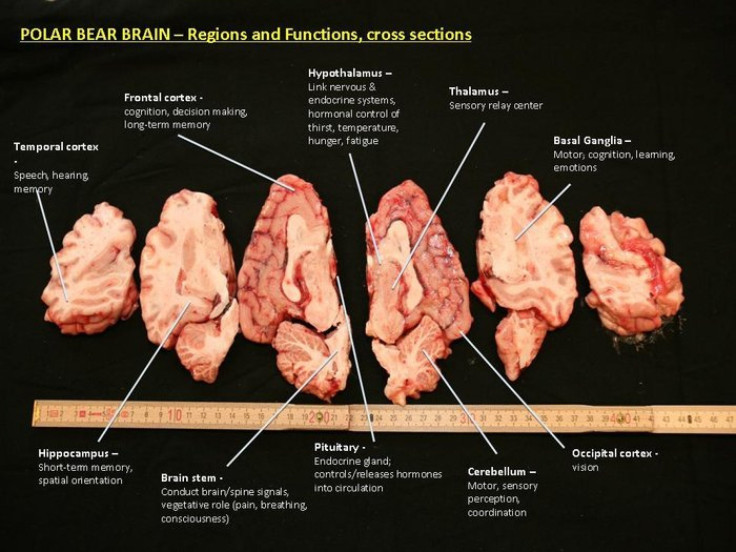Polar Bear Brains Contain Environmental Toxins, Chemicals 'Can Have A Severe Impact' On Organs [PHOTO]

Polar bears may be losing their habitat from climate change, but their livelihoods are threatened by something else manmade too. In a recent study conducted by Danish and Canadian researchers, scientists have found several environmental toxins in the brain tissue of polar bears living in Scoresby Sound in Greenland.
The toxins, known as PerFluoroAlkyl Substances, have been used in the past 60 years in industrial products like oil-repellent coatings, textiles and upholstery. Since PFASs are resistant to biological degradation, polar bears become exposed to them as they enter the Arctic food chain by air and sea currents, according to the study.
"If PFOS and PFCAs can cross the blood-brain barrier in polar bears, it will also be the case in humans,” Professor Rune Dietz of Aarhus University in Denmark said in a statement referring to two specific compounds, perfluorooctane sulfonate (PFOS) and perfluorinated carboxylate (PFCAs). “The brain is one of the most essential parts of the body, where anthropogenic chemicals can have a severe impact.”
Previous studies have offered similar conclusions. In a 2011 study, scientists found that while the industrial chemicals didn’t cause deadly diseases in polar bears, it did damage their bones, organs and immune systems, Christian Sonne, senior scientist at Aarhus University, said in a statement. The same study found similar effects in Arctic foxes and Greenland sled dogs. A 2010 study concluded that polar bears had the highest levels of toxic pollutants of any animal, the Telegraph reports.
In the most recent study published in Environ Toxicol Chem, researchers used polar bears as a “sentinel species for humans” and other predators at the top of the food chain. Together they showed there were high levels of PFOs and PFCAs in eight regions of polar bear’s brains – results they found to be “quite worrying.”
Despite being phased out in the United States, PHASs are found in products made in China. In fact, since the U.S. and the Western world stopped using them, production sources in China increased by a factor of 10. But overall PFOss concentrations worldwide have been on the decline in other Greenlandic animals. Dietz says this is promising, but encourages consumers to take action in order to avoid harming the vulnerable species.
“My best advice to the consumers is to go for environmentally labeled products. But avoiding products is difficult, because PFASs are so widespread in many kind of products and they are rarely declared," he said.
© Copyright IBTimes 2024. All rights reserved.












